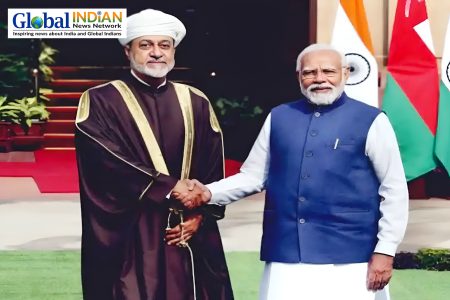
In a Maryland suburb near the US capital, the tallest statue of Dr. B.R. Ambedkar, the principal architect of India’s Constitution, was formally inaugurated. The unveiling of the 19-feet tall “Statue of Equality” drew over 500 Indian-Americans from various parts of the United States, India, and beyond, despite heavy rain and drizzle. Many attendees traveled long distances, some up to 10 hours, considering this event historic.
The statue was crafted by renowned artist Ram Sutar, known for the Statue of Unity, a statue of Sardar Patel in India. It’s referred to as the “Statue of Equality,” symbolizing the global issue of inequality. Dr. B.R. Ambedkar, often known as Babasaheb, played a pivotal role in drafting India’s Constitution.
The Ambedkar International Center (AIC) in Accokeek, spanning 13 acres, includes a library, convention center, and Buddha Garden. Ravi Kumar Narra, national president of the Dalit Indian Chambers of Commerce and Industry (DICCI), mentioned that Dr. Ambedkar’s ideas are gaining recognition for their contributions to empowering marginalized groups and the economically weaker sections.
The “Statue of Equality” serves as a representation of India’s 1.4 billion people and the 4.5 million Indian Americans. This achievement received acknowledgment from Prime Minister Narendra Modi and External Affairs Minister S. Jaishankar, reflecting its significance for the Indian-American diaspora and the pursuit of social justice.
The ceremony included cultural performances and recognition of community service, with Narra receiving the US President’s Lifetime Achievement Award. Dr. Ambedkar, post-Independence, served as the Minister of Law and Justice in India’s first Cabinet. He was a pivotal figure in advocating for the rights of Dalits and untouchables.
Dr. Ambedkar passed away on December 6, 1956, after embracing Buddhism on October 14, coinciding with the statue’s unveiling. This date, October 14, holds significance as Dhamma Chakra Parivartan Din among Ambedkarites.













